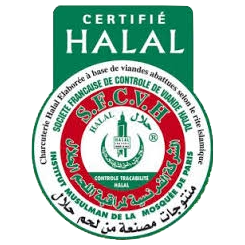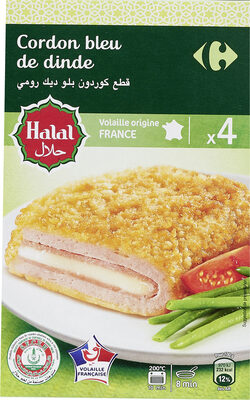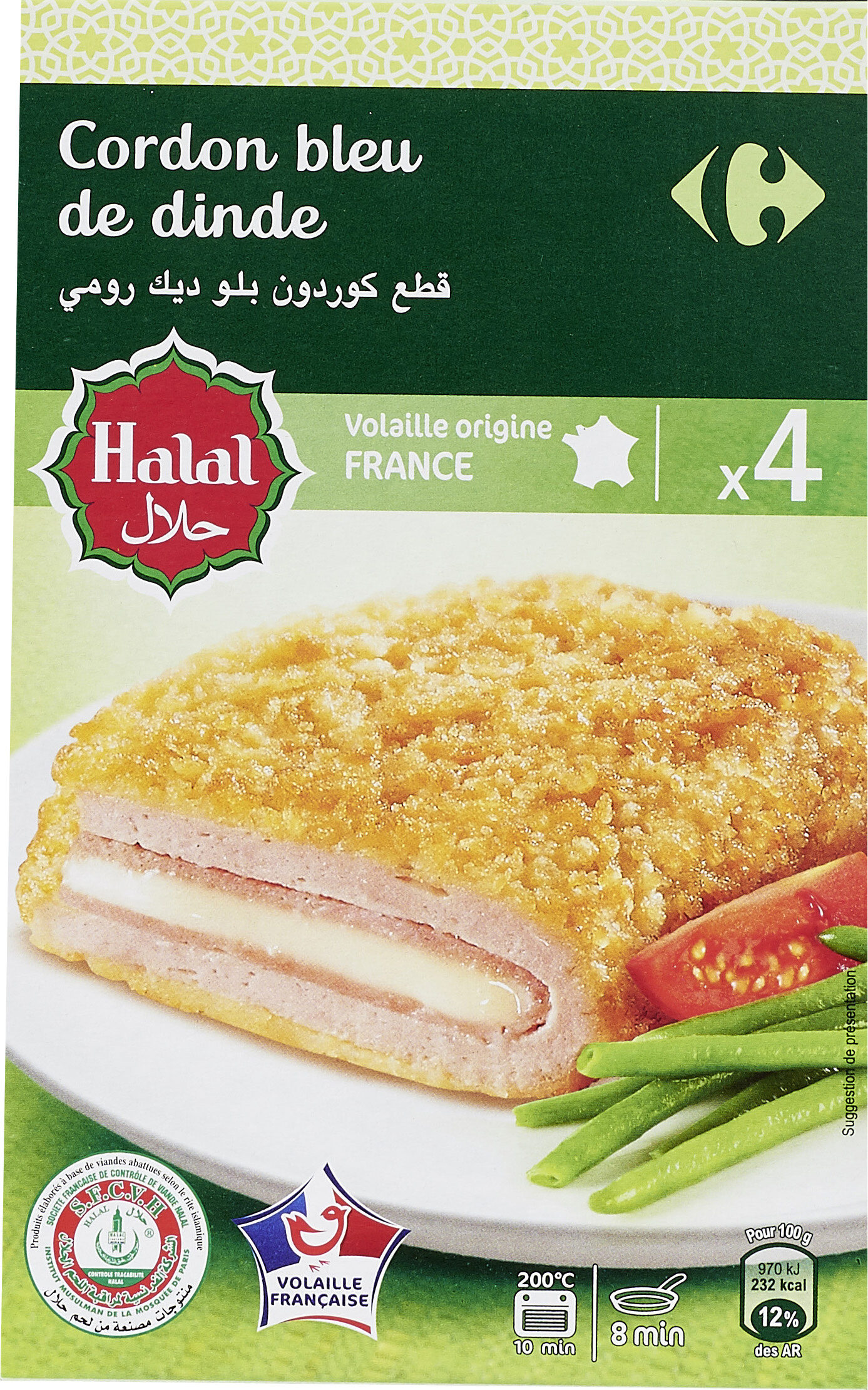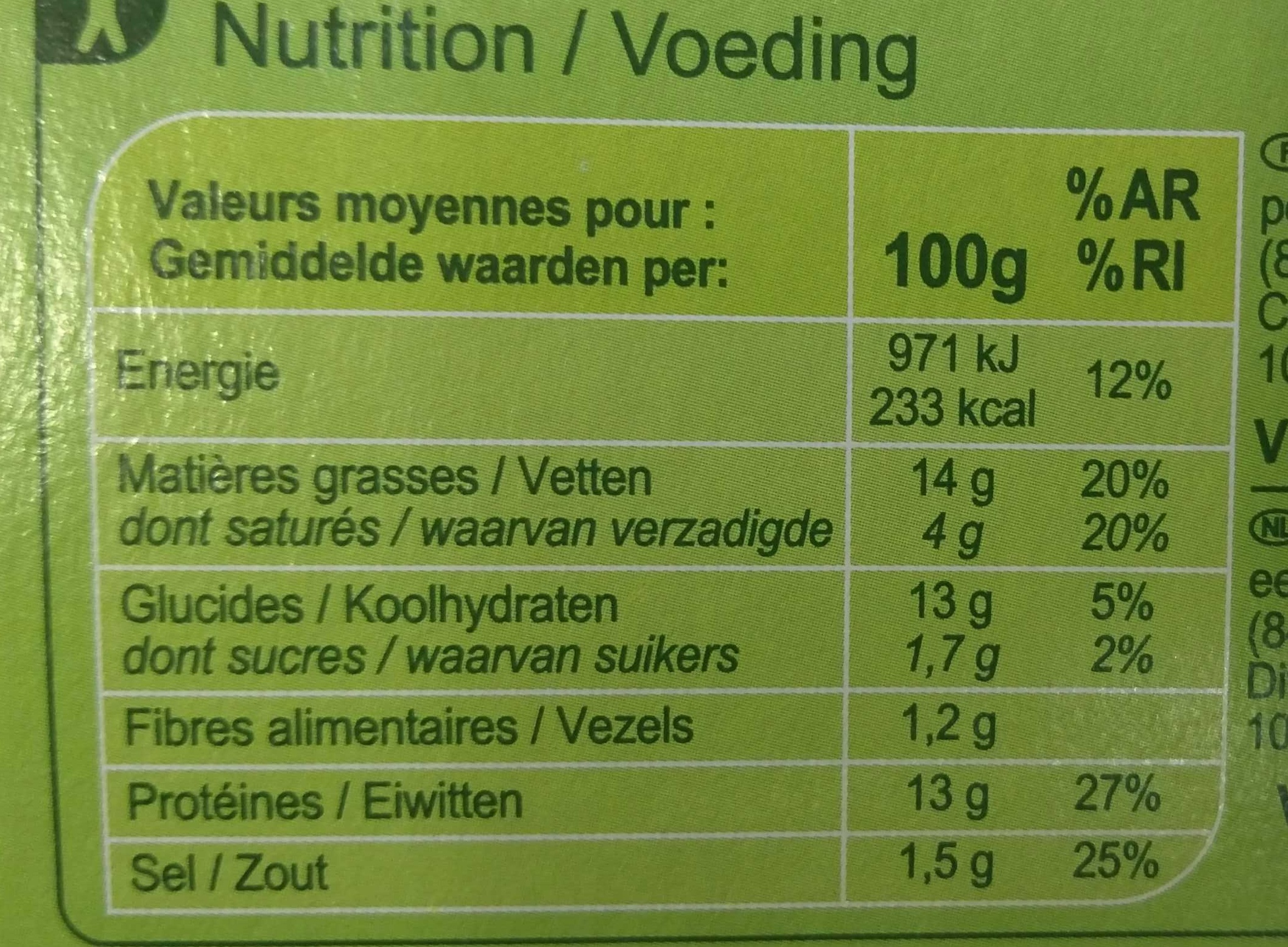Cordon bleu de dinde Halal - Carrefour - 400 g
Important note: this product is no longer sold. The data is kept for reference only. This product does not appear in regular searches and is not taken into account for statistics.
This product page is not complete. You can help to complete it by editing it and adding more data from the photos we have, or by taking more photos using the app for Android or iPhone/iPad. Thank you!
×
Some of the data for this product has been provided directly by the manufacturer Carrefour.
Barcode: 3560070513789 (EAN / EAN-13)
Common name: Préparation de viande de dinde traitée en salaison (53%), panée, cuite et garnie de jambon de dinde (11.5%), et de fromage fondu (11.5%). Halal.
Quantity: 400 g
Packaging: Plastic, Bag, Individual bag, Container
Brands: Carrefour
Categories: Meats and their products, Meats, Meat preparations, Poultries, Turkey and its products, Breaded products, Turkeys, Turkey preparations, fr:cordons-bleus, fr:cordons-bleus-de-dinde, Frais
Labels, certifications, awards:
French meat, French poultry, Green Dot, Halal, fr:Société Française de Contrôle de Viande Halal, Fabriqué en France, Viande Française, Volaille Française


Origin of the product and/or its ingredients: Viande de volaille origine France.
Producer: Fabriqué en France par EMB 77 208C pour Interdis.
Manufacturing or processing places: France
Traceability code: FR 77.208.001 CE - Gouaix (Seine-et-Marne, France), EMB 77208C - Gouaix (Seine-et-Marne, France)
Stores: Carrefour
Countries where sold: France
Matching with your preferences
Other information
Other information: logo Mosquée de Paris (Produit élaboré à base de viande abattue..) logo volaille Française
Preparation: conseils de préparation Au four traditionnel : préchauffez votre four 10 minutes à 200°C (thermostat 6/7), puis placez les cordons bleus dans un plat, sans apport de matière grasse, et faites-les réchauffer 10 minutes. A la poêle : faites dorer à feu moyen 4 minutes de chaque côté, sans ajouter de matière grasse.
Conservation conditions: A conserver entre 0°C et 4°C. Conditionné sous atmosphère protectrice A consommer rapidement après ouverture.
Customer service: Interdis - TSA 91431 - 91343 MASSY Cedex - France
Report a problem
Data sources
Product added on by phoenix
Last edit of product page on by org-carrefour.
Product page also edited by carrefour, date-limite-app, ecoscore-impact-estimator, gmlaa, halal-app-chakib, openfoodfacts-contributors, packbot, quechoisir, quentinbrd, roboto-app.












